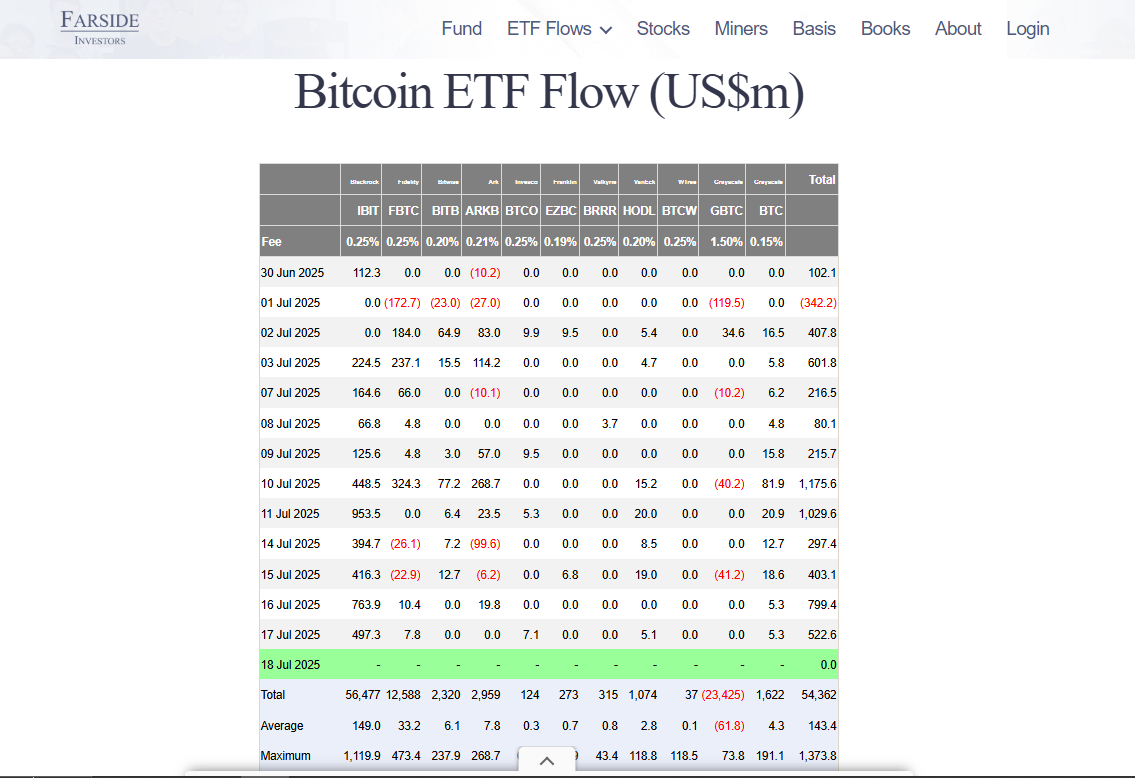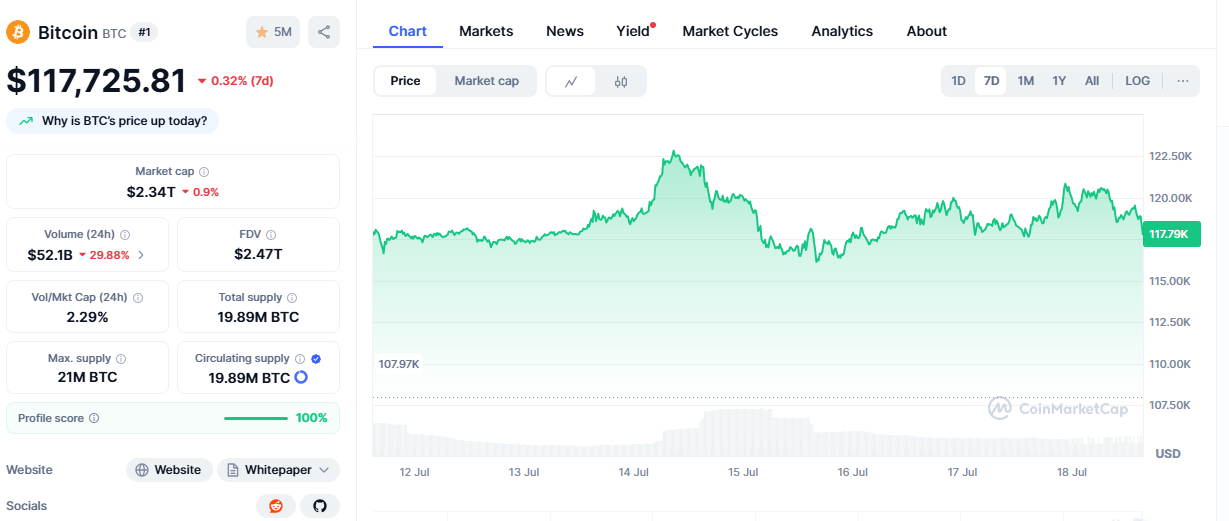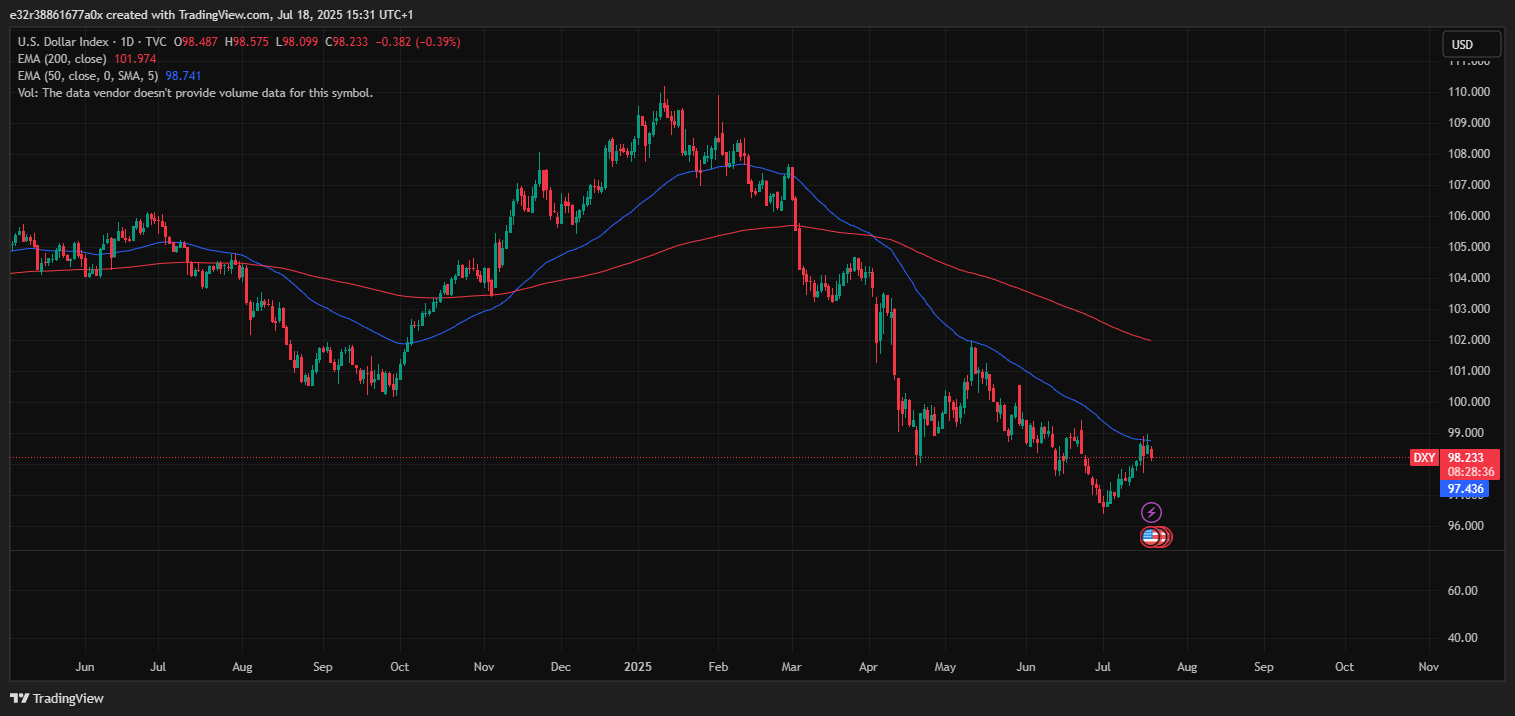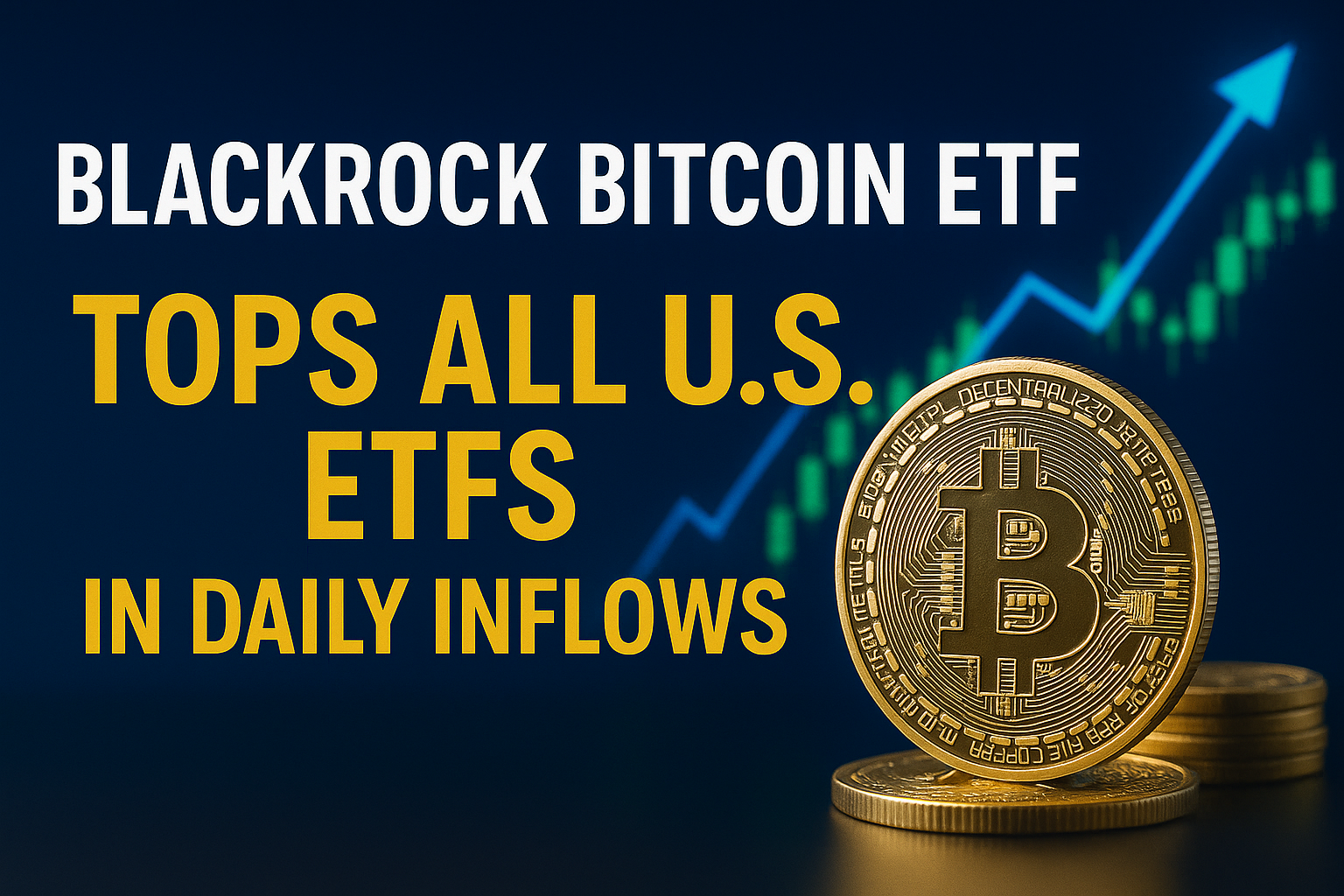Key Takeaways
- Bitcoin recently hit $122,000 as institutional money flowed in through Bitcoin ETFs.
- BlackRock’s Bitcoin ETF, in particular, has been strong with $80 billion AUM, outpacing gold ETFs.
- The weak U.S. dollar and rising government debt are increasing Bitcoin adoption.
Bitcoin has soared to a new high of $123,000 lately. This massive rally has been primarily fueled by the rise in the cryptocurrency’s institutional demand. According to data, BlackRock is leading this charge with its flagship Bitcoin ETF.
The entry of major financial institutions into crypto reshapes how investors view digital assets. Their involvement adds legitimacy and may accelerate Bitcoin’s transition from speculation to a recognized investment class.
BlackRock Bitcoin ETF And Institutional Momentum
iShares Bitcoin Trust of BlackRock has become one of the most successful ETFs in history. In just 18 months, it has attracted $80 billion in assets under management. This is faster growth than SPDR Gold Shares, which took over 15 years to hit the same mark.
This rise shows how quickly Bitcoin is gaining ground as a mainstream investment. Wall Street poured $35 billion into Bitcoin ETFs last year alone. By mid-2025, this figure had increased by an additional $50 billion.
According to data from Farside investors, BlackRock’s involvement has given the market a sense of legitimacy. Also, the trend appears only to be starting.

Bitcoin ETF space has seen 11 straight days of inflows. Amid this, IBIT of BlackRock is leading the charge on most of these days, per Farside Investors data.
Since 2 July, IBIT has seen nearly $5 billion in inflows. It recorded $763 million and $497 million in inflows between 16 and 17 July alone.
Bitcoin Price Surge and Stability
Bitcoin has gained over 25% this year and outperforms most mainstream financial assets. The S&P 500 index has risen just 6.58% within the same timeframe. Even with occasional daily dips, like the 2% drop recently, Bitcoin’s long-term movement appears strong.

What’s more interesting is Bitcoin’s decline in volatility. The asset, which is historically known for sharp price swings, has become more stable. The reason for this behaviour in terms of price is the consistent inflow of funds through ETFs.
These funds have helped to improve Bitcoin’s liquidity. They also helped maintain its price levels by absorbing buying and selling pressure.
Last Thursday alone, U.S. Bitcoin ETFs saw $1.17 billion in new inflows. It is the kind of daily demand supporting Bitcoin’s price.
Why Institutions like BlackRock Are Choosing Bitcoin?
Two major factors behind this trend are institutions like BlackRock adopting Bitcoin. It is macroeconomics and market structure. First, the U.S. dollar is weakening.
According to data from TradingView, the DXY Index has lost nearly 10% of its value this year. This has made holding cash less attractive, mainly when inflation eats into purchasing power.

Investors are looking for safer alternatives, considering the rise in government debt and the “big beautiful bill” from Trump. This bill is adding to deficit fears.
Bitcoin offers protection against inflation and currency devaluation. It’s scarce, borderless, and more regulated over the years, which appeals to conservative institutions.
Second, Bitcoin ETFs have made access easier. Investors who once hesitated due to custody or security issues can now buy Bitcoin exposure just like a stock. That simplicity is driving adoption faster than ever before.
Bitcoin vs. Gold: A Shift in Safe-Haven Assets
The growth of the Bitcoin ETF of BlackRock is also affecting the conversation around gold. For decades, gold was the go-to asset during times of economic uncertainty. However, Bitcoin is starting to take that role, especially for younger investors and institutions.
While gold ETFs grew steadily over the years, Bitcoin ETFs are growing even faster. Their appeal is closely tied to Bitcoin’s fixed supply and ability to be traded 24/7. Also, Bitcoin offers more upside potential than other commodities like gold.


